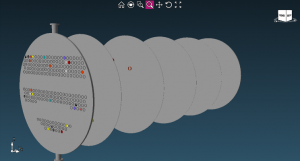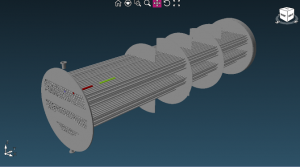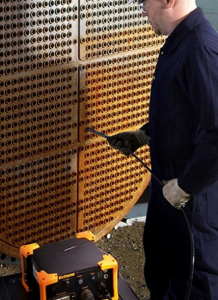The impact of AI on Inspection Techniques
Applus+ has been providing asset integrity services to a variety of clients since the 1960s, and with the major contracts we are currently working on, we have stepped up a gear in developing and accessing advanced technologies which include Artificial Intelligence (AI), Machine Learning (ML) and Deep Learning (DL) capabilities .
In an ever-changing inspection environment which demands a specific and efficient reaction to the needs of our clients, our technologies need to be constantly evolving. This drives us to provide smarter inspection processes and report delivery.
Currently, Applus+ performs tube inspections on a large scale on a range of assets including chillers, heaters, coolers, boilers, air coolers and heat exchangers, to name but a few. For the inspection of hundreds of thousands of tubes annually, we rely on the expertise and experience of analysts who are specialists in signal interpretation. While we already provide a high-quality, world-class service for the evaluation of tube bundles, we are continually looking at ways of improving the efficiency and effectiveness of our service provision.
AI is transforming industrial inspection
In line with the fourth industrial revolution, equipment manufacturers (including Applus+ for its inspection and testing services) are responding to industry’s challenges by developing robotic and automated inspection equipment to meet the needs of physically demanding inspection zones and safety-critical inspection environments. As software improves, the analysis and reporting on thousands of data points are now also being simplified by machine learning and the creation of analysis platforms with Artificial intelligence.
AI-Driven Inspections
Creating algorithms for specific, known information about signal responses from ultrasonic reflectors can provide a platform upon which to work. For example, for the purpose of analysis and evaluation, general wall loss in a tube produces a distinctly different eddy current signal to that caused by localised pitting. By collecting this information and creating the algorithms for signal recognition of the full range of known variables, analysis and evaluation platforms can be created. With the consistent, known variables factored into the algorithm, additional variables such as material types and geometrical considerations (tube supports) are added. With machine learning, the algorithm can update itself through the consistent and continual addition of data files, and thus improve on the amount of human interaction required. This is where deep learning starts to take effect.
In current industry practice, where there is inspection data ranging in tens of thousands of acquisition points for quantities and tube lengths, as is the case with heat exchanger tube inspections using the eddy current inspection method, the onus is on the highly skilled and experienced analyst to trawl through this data in a very short time frame to deliver precise and accurate results for a range of degradation mechanisms. The human element in both inspection and analysis is bound to cause some issues at some time or another.
Using digital twin models to integrate inspection results


By incorporating AI platforms into the process, inspection results are integrated into a digital twin model and can be updated, repaired or exchanged as the sentencing requirement dictates. A model of degradation of tubes can be built up for each inspection type in a model of the heat exchanger or company asset, to assist with the assessment of the remaining life and condition of the asset.


Reported data can be stored in a virtual space, in the digital twin rather than in bulky and cumbersome pdf or paper reporting formats. Interactive views showing the location of degradation in the tubes can be accessed. When multiple inspection techniques are used on the same asset, the results can be interwoven into the software models as confirmation or additional data of degradation mechanisms. This gives an added benefit when accessing areas where one inspection technique is either not able to detect, or less sensitive to, a particular degradation mechanism (e.g. tube internal degradation or tube external degradation).
With our drive to continually perform beyond standards and exceed our clients’ expectations, the Applus+ Group strives to improve on every service we currently deliver.